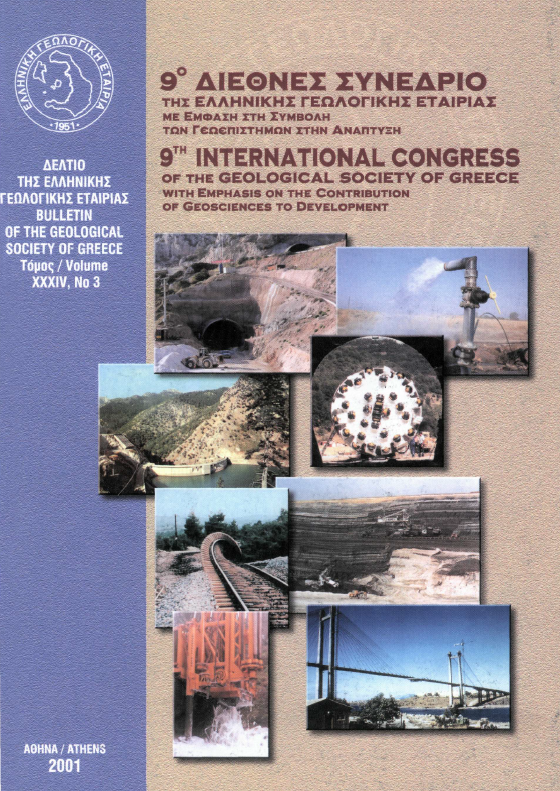The mineralogy and geochemistry of zeolite-bearing volcanics from Acrotiri (Santorini island) and Polyegos (Milos group of islands), Greece. Implications for geochemical classification diagrams
Résumé
Almost 100 samples of volcanic rocks from Akrotiri (Santorini Island) and Polyegos (Milos group of Islands) were studied. Clinoptilolite and mordenite dominate the mineralogy in Akrotiri and Polyegos respectively. In Akrotiri, an acidic mainly precursor, probably a rhyodacite-dacite type of rock, was the parent precursor, although some samples indicate a more basic one. In Polyegos, it seems that a trachyandesite/rhyodacite type of rock has acted as precursor. However, this could be due to the possible depletion of Y under hydrothermal alteration, the increase of the Nb/Y ratio, and the shift (in the (Nb/Y vs. Zr/Ti02 diagram) of the nature of the precursor towards a more alkaline character. Thus, the true nature of the unaltered fresh precursor could actually be closer to the rhyodacite-dacite type of rock field. Geochemical classification diagrams using Si02, Na20 and K20 are not suitable for use with such materials. Diagrams using less mobile elements, such as Zr, Ti, Nb and Y are much more reliable, but with hydrothermal alteration conditions, their usefulness is variably restricted, and they should also be used with caution.
Article Details
- Comment citer
-
KITSOPOULOS, K. P., SCOTT, P. W., JEFFREY, C. A., & MARSH, N. G. (2001). The mineralogy and geochemistry of zeolite-bearing volcanics from Acrotiri (Santorini island) and Polyegos (Milos group of islands), Greece. Implications for geochemical classification diagrams. Bulletin of the Geological Society of Greece, 34(3), 859–865. https://doi.org/10.12681/bgsg.17100
- Rubrique
- Mineralogy and Crystallography

Ce travail est disponible sous licence Creative Commons Attribution - Pas d’Utilisation Commerciale 4.0 International.
Authors who publish with this journal agree to the following terms:
Authors retain copyright and grant the journal right of first publication with the work simultaneously licensed under a Creative Commons Attribution Non-Commercial License that allows others to share the work with an acknowledgement of the work's authorship and initial publication in this journal.
Authors are able to enter into separate, additional contractual arrangements for the non-exclusive distribution of the journal's published version of the work (e.g. post it to an institutional repository or publish it in a book), with an acknowledgement of its initial publication in this journal. Authors are permitted and encouraged to post their work online (preferably in institutional repositories or on their website) prior to and during the submission process, as it can lead to productive exchanges, as well as earlier and greater citation of published work.



